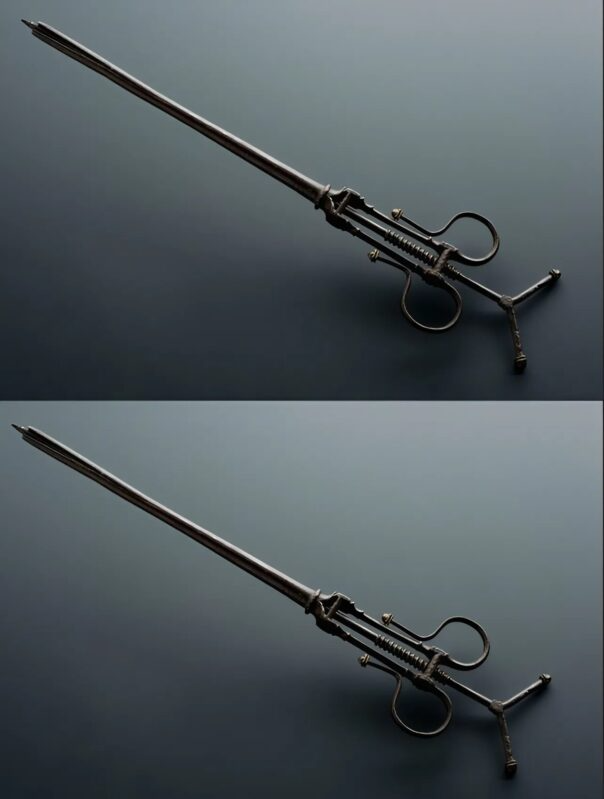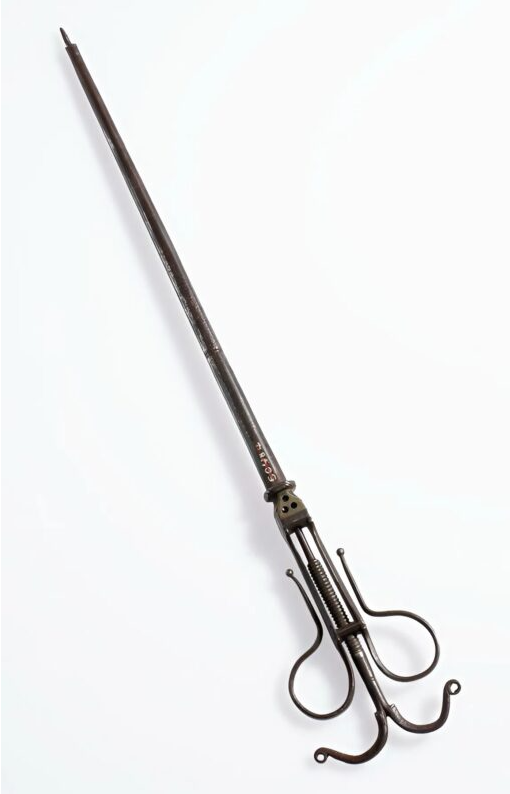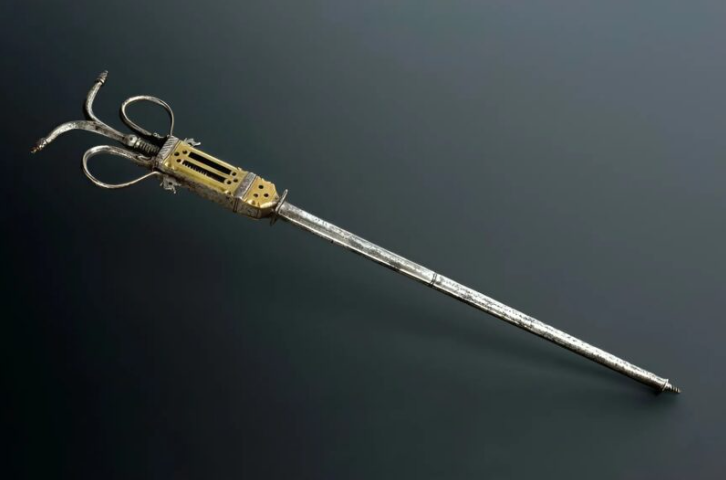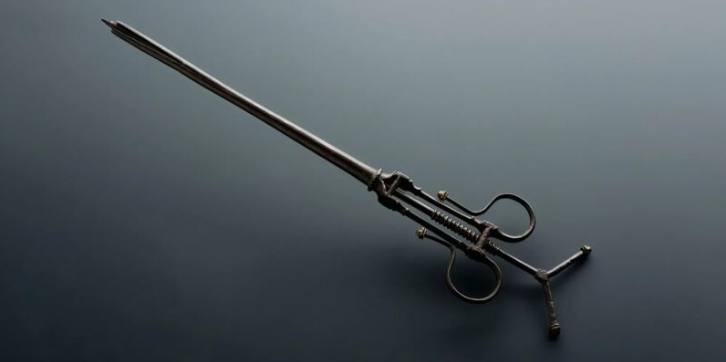When we think of medieval medical tools, we often imagine crude and rudimentary instruments. However, one surprising exception is the 16th-century bullet extractor—a device so innovative that it shaped the future of battlefield surgery. This fascinating tool emerged during a time when firearms were becoming more prevalent, and the brutal nature of gunshot wounds demanded a medical breakthrough.
In the hands of skilled surgeons, this extractor became a symbol of hope amid the chaos of war. Let’s take a closer look at how this remarkable instrument worked, its historical significance, and why it remains an intriguing artifact of medical history.

The Rise of Firearms and Medical Challenges
The 16th century marked a significant shift in combat. As gunpowder-based weapons became more sophisticated, battlefields turned into chaotic scenes of injury and suffering. Unlike traditional weapons, bullets caused deep, irregular wounds that posed severe medical challenges.
Surgeons faced new obstacles:
- Bullets could embed deeply into muscle or bone, making them hard to locate.
- Lead poisoning and infection were common, often leading to life-threatening complications.
- Quick and precise removal was crucial since there were no antibiotics to curb infection.
Amid this grim reality, the need for a specialized tool became evident, leading to the creation of the bullet extractor—a revolutionary device in medieval surgery.
Video: How to Remove a Bullet in the 18th Century
How the Bullet Extractor Worked: An Ingenious Design
At first glance, the bullet extractor might appear strange and intimidating. However, its unique design was surprisingly practical for the challenges it addressed. The tool consisted of a long, slender shaft with claw-like mechanisms or screw features at the tip, designed to grasp and extract deeply lodged bullets.
Here’s how surgeons used the extractor:
- Locating the Bullet: Without modern imaging, surgeons relied on touch and simple metal probes to pinpoint the bullet’s position.
- Inserting the Extractor: The tool was carefully inserted into the wound, navigating around delicate tissues.
- Grasping the Bullet: The device’s claws would expand to secure the bullet, or the screw mechanism would grip it tightly.
- Careful Extraction: The surgeon would then slowly and steadily pull the bullet out, minimizing additional damage.
- Post-Extraction Care: The wound would be cleaned and sometimes cauterized to reduce the risk of infection.
Imagine the nerve it took to perform this procedure without anesthesia, using just basic pain relief like wine or opium. The surgeon’s skill and composure were crucial for a successful outcome.
The Skill of Medieval Surgeons: Masters of Improvisation

In the absence of modern technology, medieval surgeons had to be resourceful and resilient. Surgery during this era was as much an art as a science. Extracting a bullet without causing further harm required immense precision, and every movement counted.
What made these surgeons remarkable?
- They worked under extreme pressure, often surrounded by the chaos of war.
- Without sterilization techniques, they knew that speed was essential to prevent infection.
- They adapted and customized their tools, creating variations to suit different wound types.
It’s astonishing to think that despite the limitations, many surgeons developed remarkable expertise, saving lives with their practical knowledge and hands-on experience.
The Legacy of the Bullet Extractor: Shaping Modern Medicine

The 16th-century bullet extractor wasn’t just a tool—it was a medical milestone. As more physicians adopted the technique, it led to significant advancements in wound care and surgical precision. This legacy influenced the development of modern trauma surgery and inspired future generations of doctors to innovate.
Key impacts of the bullet extractor:
- Encouraged more accurate anatomical studies, fostering better surgical techniques.
- Laid the groundwork for the development of more sophisticated extraction tools.
- Provided insights into wound management, which later led to antiseptic practices.
Even though technology has evolved dramatically since then, the basic principle of extracting foreign objects safely remains relevant in modern surgery.
A Glimpse into the Past: The Bullet Extractor as an Artifact

Today, bullet extractors from the 16th century can be found in museums, reminding us of the ingenuity of medieval medicine. These artifacts serve as a testament to the human drive to innovate—even in the most challenging circumstances.
It’s fascinating to think that such a seemingly simple tool could hold so much historical significance. When we examine these instruments, we’re not just looking at metal and mechanisms—we’re glimpsing the lives of those who fought to save others during times of unimaginable hardship.
A Symbol of Medical Progress
Video: How to Remove a Bullet in the 18th Century
The story of the bullet extractor is more than just a tale of medical evolution; it’s a story of perseverance and human creativity. During an era when life and death often hung by a thread, these tools offered a fighting chance.
We may no longer use such crude instruments, but the spirit of innovation that drove their creation lives on in modern medical practices. The bullet extractor reminds us that even in the darkest times, humanity’s quest to heal and survive knows no bounds.
Conclusion
The 16th-century bullet extractor stands as a remarkable relic of medical history. Its creation was a direct response to the brutal realities of warfare, and its impact was profound. Not only did it save lives, but it also paved the way for surgical advancements that continue to benefit modern medicine.
Reflecting on this ancient tool, we see how necessity can inspire creativity and how early medical practitioners laid the foundation for the healthcare we know today. The bullet extractor’s legacy is a reminder of the enduring human spirit—always striving to heal, innovate, and overcome the odds.


